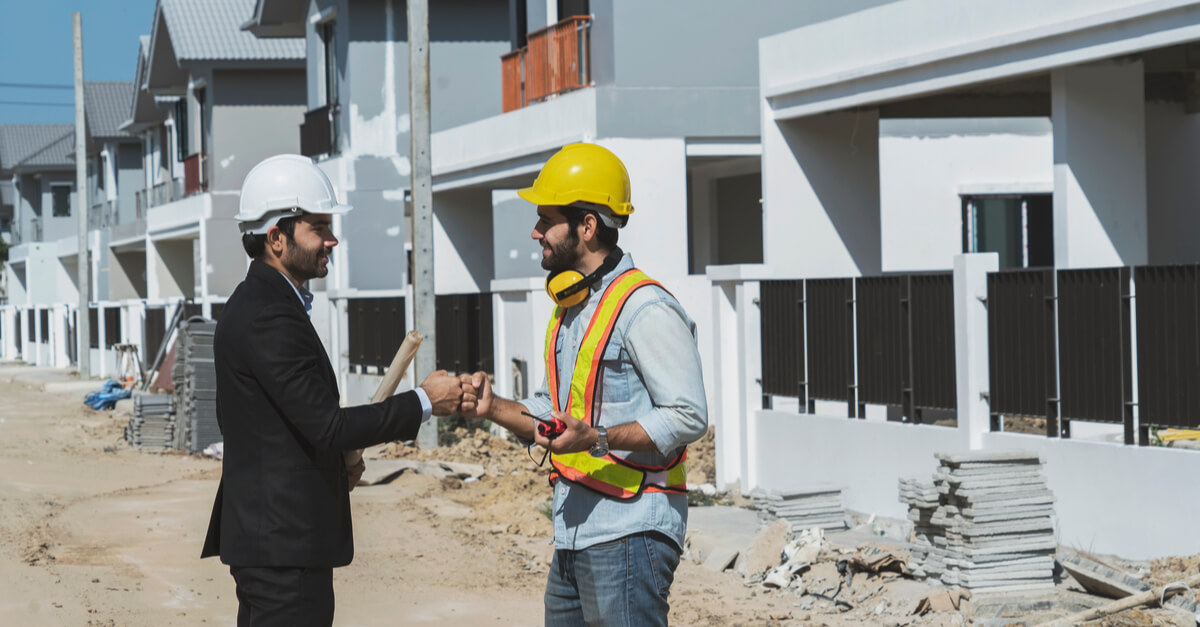Subcontractor Tips for Finding Good General Contractors to Work With
Construction is built on subcontractor general contractor relationships. Subcontractors should build those relationships with good general...

As a contractor, when was the last time you reviewed the substantial completion terms in one of your contracts? Sure, you probably know the date set in the contract for work to substantially complete, barring any authorized extensions from justified delays, because that means it’s time to get paid the remainder of the contract amount along with any retainage that was withheld along the way.
Reaching substantial completion on a job also frees you from certain liabilities and transfers responsibility for the project over to the owner. The date of substantial completion also starts the clock on warranties, lien and bond claims, and statutes of limitations and repose.
Because it’s such an important milestone on a project, it’s important to understand what substantial completion is and how it’s determined for each job and laid out in the contract.
In a nutshell, substantial completion in construction is the point when work is nearly complete, and the building can be occupied and used as intended. The American Institute of Architects defines substantial completion as,”the stage in the progress of the Work when the Work or designated portion thereof is sufficiently complete in accordance with the Contract Documents so that the Owner can occupy or utilize the Work for its intended use.”
That definition is fairly universal, with many states and government agencies adopting similar language as statutes or regulations for construction projects. On the surface, that definition may seem straightforward but, in reality, it’s extremely vague. For you as a contractor, substantial completion may mean one thing, and be a completely different thing in your owner’s mind. Multiply that by all the different projects you work on and all the owners you work with, and you’ll see how ambiguous that definition is.
There are a couple of options for clarity here. The first would be to tie substantial completion to a certificate of occupancy. A certificate of occupancy is required and issued by the local government’s building department or other agency to certify that the building was constructed in compliance with all applicable building codes and has passed any number of inspections including fire safety, plumbing, elevator, electrical, architectural, and general building inspections.
Using a certificate of occupancy as the determination for whether substantial completion makes sense because a third party has determined that the building can be occupied, meeting the definition from the AIA nicely.
The second option would be to work with the owner to create a detailed list to clearly define what substantial completion looks like on each project and have that laid out in your construction contract along with the date for substantial completion to occur or timeline to reach substantial completion.
Clearly defining what substantial completion looks like and when it will occur through collaboration between owner and contractor is vital to a successful project. It’s so important that most construction contracts require a certificate of substantial completion with the industry standard being those from the AIA.
When a contractor feels that a project is substantially complete as outlined in the construction contract, they will notify the architect and request a certificate of substantial completion. The architect will inspect the work to verify that it is substantially complete and a list of items that still need to be completed or corrected will be created.
This list, commonly referred to as a punch list, is what the contractor will work from to reach final completion on the project. The punch list will be attached to the certificate of substantial completion and a cost estimate of that work along with a date for it to be completed will be noted on the certificate.
Back when blueprints were still blue, a punch list was a physical list that would have a hole punched next to each item as they were completed. These days, most contractors use any of the dozens of digital punch list apps available today—as a standalone solution or as part of a comprehensive project management software.
The certificate of substantial completion will also lay out the responsibilities of the owner and contractor for security, maintenance, heat, utilities, damages, and insurance. Both the owner and contractor will sign and date the certificate to establish the official and legally binding date of substantial completion.

When the project has been determined to be substantially completed, the owner can begin to occupy and use the building or the portion of the project that has reached substantial completion. That could be whole buildings, floors, wings, etc.
As mentioned earlier, substantial completion is a major milestone on the project in terms of transferring responsibility of the project from the general contractor to the owner. It is also when the clock starts running on warranties, claims, and statutes. Once substantial completion has been reached the countdown on the following items and deadlines are triggered:
The date of substantial completion is also important to subcontractors and suppliers because it determines when they get paid, or if they don’t get paid, when they are able to file a bond claim or a mechanics lien.
This is also the point where the contractor and its subcontractors enter the final closeout phase of the project and start finishing up the items on the punch list that haven’t been completed or corrected. Once the punch list items have been completed, the contractor has reached final completion and can request final payment for all money and retainage still owed to them.
Final cleaning of the building and site will take place during project closeout. All waste, equipment, materials, and temporary utilities and structures will be removed.
The general contractor will perform the handover of closeout documents to the owner. What’s included in this package of documents can vary from project to project but typically includes:
Of substantial completion and final completion, substantial completion on a construction project is by far the bigger milestone. From a legal standpoint, the date of substantial completion is far more important due to all the events and timelines it triggers. Substantial completion comes first and determines what items are left to be completed and added to the punch list.
Final construction involves finishing up the punch list, cleaning up, and clearing out of the site for the general contractor and subcontractors. All final payments are processed and the general contractor hands over the closeout documents to the owner. The project closeout marks the end of the final construction phase.
Certificates of substantial completion are common on construction projects while certificates of final completion are rarer. The AIA has three different substantial completion forms based on the contracting method for the project but none for project closeout or final construction.
Because of all the items tied to substantial completion, it’s important for the general contractor and owner to be on the same page on what precisely it means and when it is expected to be accomplished. Having a comprehensive and detailed list of what must be completed for a project to be substantially complete provides clarity.
Removing ambiguity over what substantial completion means on each project means there’s less of a chance of any litigation or disputes further down the road. Successful construction projects depend on clear and constant communication among all parties and getting to substantial completion is no exception.
Want to stay on top of the latest construction trends, economic news, and industry insights? Subscribe to our blog here.
Kendall Jones is the Editor in Chief at ConstructConnect. He has been writing about the construction industry for years, covering a wide range of topics from safety and technology to industry news and operating insights.
Construction is built on subcontractor general contractor relationships. Subcontractors should build those relationships with good general...
A contractor bond is a type of surety bond that is commonly required by state and local licensing bodies as a condition of obtaining a contractor...
Construction contract disputes frequently arise from the specific terms of the written (or unwritten) contract. Litigation requires credible...
Small contractors wear many hats and tech tools could help level the playing field against larger contractors.